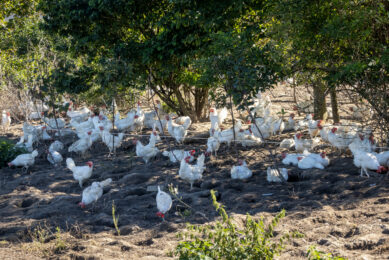First successful ASEAN Feed & Rice Symposium

Much work has to be done in the ASEAN region, but great efforts have already been made regarding food and feed. This was one of the conclusions drawn from the first ASEAN Feed & Rice Symposium, held at Victam Asia 2014.
Mr. Tran Dong Phuong, Director for Finance, Industry and Infrastructure, ASEAN Economic Department explained that the agricultural sector is now a rapidly expanding sector in ASEAN region (Association of South East Nations), especially in Indonesia, Malaysia, Philippines, Singapore, Thailand, and Viet Nam. “To support this potential agro-industry sector and to respond to the rapid growth of regional and international trade, ASEAN has committed to strengthen regional food security, and to enhance agricultural and forestry production and its competitiveness in international market”, he explained.
Economic integration
ASEAN cooperation and integration in the agriculture sector is guided by the ASEAN Economic Community (AEC) blueprint, adopted by the ASEAN Leaders in 2007. This serves as a coherent master plan of ASEAN economic integration to achieve an ASEAN Economic Community by 2015 (and to come into effect January 1st 2016), which is characterised by four components: (1) a single market and production base; (2) a highly competitive economic region; (3) a region of equitable economic development; and (4) a region fully integrated into the global economy. The vision behind this is to make the whole region more harmonised and to step up production and export possibilities, mainly in the agricultural sector.
Harmonisation in feed safety
Dr. Thamana Lekprichakul, Program Coordinator Working Group on Agriculture Secretariat Asian Development Bank (ADB) explained the investments and efforts that are done by the EDB. “We have been involved in the Core Agricultural Support Program (CASP). The first phase has been finished in 2012. In the second phase towards 2022 we want to invest in the agricultural sector by stepping up the food safety, harmonize the feed safety standards in the ASEAN region and to introduce a food traceability system. Lekpriochakul addressed that regional integration within ASEAN can have consequences on agricultural trade and low product differentiation and named the Greater Mekong Sub region as an example for the rest of the Asian sub regions.
Feeding the world
Mr. Vinod Ahuja, Livestock Policy Officer, FAO Regional Office for Asia and the Pacific updated the audience of the symposium on the current challenges to feed the growing world population. “In 2050 we have to produce 60% more food globally. In the developing countries this is 77% and the developed countries 24%. More livestock is needed. But at the same time, animals and humans are competitors for grain. Especially the pig and poultry sector and we see the growth rate of cereals (in % per year) declining”, Ahuja explained. He also named water as the limiting factor in the future. The total agricultural business already uses 70% of the total water use.
The ASEAN Feed & Rice Symposium attracted around 100 attendees.











